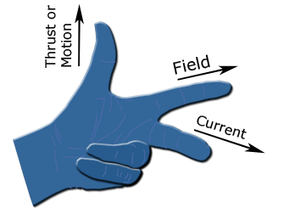

FAQs
Q : What about Shipping and Returns?
A : See this page for everything about Shipping and Returns
Q: What are BlackDiscus made from?
A: They made of an epoxy-based composite. The composition, while important, is not the key factor in how and why BlackDiscus works. In fact we have used dummy devices, made from the exact same compound. But the dummy devices do not undergo any of the processing steps that make BlackDiscus special. Consequently, the dummy devices can be easily blind picked from the real thing. Also the dummy devices are indistinguishable from a plain washer of the same weight (a more obvious dummy).
Q: Are they toxic or radioactive?
A: No.
Q: How do they work - what do they do exactly?
A: Although I discovered the effect accidentally, I have been experimenting and researching just about every day since. And I've gained a pretty good idea of some of what these things do. I believe that they do more than one thing - at least two, maybe more. One effect seems to be more localized than the other, but they seem to be related.
One effect could be loosely termed "interference disruption", and operates over a fairly short distance, a few inches say. The other effect I don't have a name for, but that operates over a larger distance, several feet.
So to understand how to use them, you need to focus on the first effect, and the second effect will naturally follow.
Compared to ferrites or other devices that absorb and/or EMI/RFI, BlackDiscus works in a different way, using the complex, non-linear properties of the material after processing.
As an aside, it's instructive to listen to the effect of a cheap ferrite cable clamp (used a lot for computers, etc.). I found that on AC and DC power supply cables, they sound awful. Not that surprising, as they don't (normally) absorb RF, as much as reflect it.
Q: Are they magnets?
A: No. BlackDiscus contain ferrous compounds which are attracted by magnets, but they are not magnetic themselves. The presence of iron compounds actually has little to do with how BlackDiscus works. Without processing, the discs do nothing. And we have made samples from completely non-magnetic materials.
Some people have claimed that magnets have the same effect as BlackDiscus. My research has found that magnets and ferrites make my system sound worse, not better. Bass is weak, dynamics all over the place, and none of the positive benefits of BlackDiscus are audible.
It's well understood, what happens when you put a magnet on, say, a wire carrying an alternating current (e.g. signal or mains power). Basically a force is exerted, and this is determined by Flemming's Left Hand Rule

With and alternating current the effect is to try to make the magnet wobble from left to right. Depending on the mechanical coupling between the wire and the magnet, the strength of the magnet, and so on, some of the energy is turned to heat, and some is reflected back, slightly delayed.
This is not a recipe for improved sound. The magnet will look like an additional load, but a highly non-linear one.
I recommend that you try comparing BlackDiscus and a magnet if you are interested. Unless you are very lucky I think you will find the BlackDiscus sounds a lot better.
Q: How many can I use?
A: This one is not easy to answer, as systems vary in their response. But on my system and on those that I've tested with, I have not found there is a point where the BlackDiscus are "too much". Rather what happens is that, say I put 10 discs in one place. This sounds pretty much the same as if I put one or maybe two discs in that place.
Q: Do you make them in your kitchen ?
A: No. My wife would kill me. Actually the question relates to the heat treatment. I tried the first time heat treating in the kitchen, but it makes a terrible smell and lots of smoke...never again. So I bought an oven for this purpose and 'cook' them outside now. Note that the heat treatment is some 'cream on the cake' as far as processing goes - the final step that rounds things off nicely. The main processing occurs before this during curing. (This also means that rain can interfere with production..)
Q: What are the Voltage and Temperature limits of BlackDiscus
A: BlackDiscus devices are non-conductive. The can
withstand mains voltage (240VAC) with no problem. Even
tube high voltage (e.g. 600V) is OK. But be careful using
them with voltages more than a few thousand volts.
Temperatures : BlackDiscus can withstand 150C
(300F), which is probably hotter than your audio system
should get. They can get a bit pungent at this
temperature (burning plastic smell) but they will not
catch fire or burn.
Q: Where is my Tracking Number?
A: If you have selected International Airmail as your shipping option on Check Out, it means your parcel does not come with any tracking ID. However, from our experience International Post is very reliable to destinations in the US and most European countries. Please see this page for more details.
Q: How does your 30-day return policy work?
A: To enable you to try our products without risk, we will accept returns for 30 days after you order, and refund the purchase price (not including shipping).
Human nature being what it is, we have to impose some conditions:
1) Only one refund per customer. This means we will only refund one order (not one item)
2) No refunds for any items we specially order for you (e.g. special power plugs, etc.)
3) For NEO-OCC cables, due to their expense, we can only offer 30-day returns on one cable
How to Return
Here's what you need to do:
Contact us via email first to let us know about the item(s) you want to return.
Send the items you want to return back to us. The return
address was included in the original package - you can
cut this out and stick on a parcel. The address is:
Mad Scientist Audio Ltd
15
Garrett Drive
Whalers Gate
New Plymouth 4310
NEW ZEALAND
Be sure to include some details that let us find your order. Typically your name and email should do the trick. If you have the Paypal transaction ID, so much the better. If you did not buy them from us, do not return them as we cannot refund orders we did not sell in the first place.
The item(s) should be posted no later than 30 days after you ordered. We advise you to use a tracking #, as if the post office loses your package (which they do about 3% of the time) then you are in an unfortunate position.



